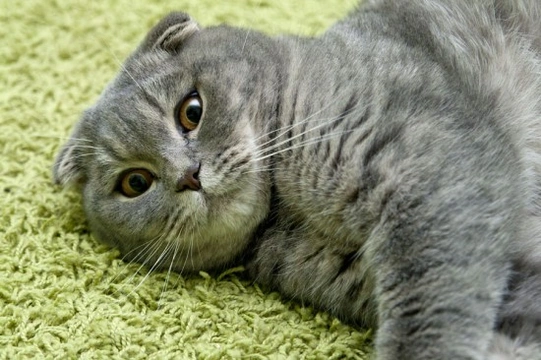
Looking after a diabetic cat
Evidence suggests that recorded cases of feline Diabetes Mellitus are increasing, and according to the UK-based Feline Advisory Bureau, it is now estimated that almost 1 in every 200 cats is diabetic. As with the human variety, diabetes is caused by a deficiency of insulin which results in raised blood glucose levels as well as glucose in the urine. Recent research carried out in Australia and New Zealand points to feline diabetes being an inherited condition in many cases, and in pedigree breeds, the Burmese has been identified as particularly susceptible to it in those countries. Obesity is a common cause of diabetes and regular Vet health checks may pick up some early warning signs, especially if urine tests are conducted. The onset of feline diabetes is most common in cats between the ages of 7 - 10 years old, although initially you might not realise anything is the matter apart from a gradual loss of weight (despite maintaining a very healthy appetite) and an increased thirst. Blood and urine tests carried out by your Vet may reveal an enlargement of the liver, and you may notice traces of blood in the urine and a poor coat if matters progress. If diabetes is left untreated, advanced symptoms include extreme depression together with the possibility of vomiting, diarrhoea, complete loss of appetite, dehydration, collapse and coma. Most owners of affected cats are naturally concerned about how they will cope with this situation, but with the help and support of your local Veterinary practice, it is now easily manageable in the vast majority of cases. If diabetic cats are diagnosed and treated at an early stage, around half of them may actually recover within a few months to the extent that they won't necessarily need insulin treatment forever.However, many cats will need insulin treatment for the rest of their lives, and your Vet or Vet Nurse will teach you how to administer this by means of an injection twice daily. This will sound very daunting if you learn that your cat has got diabetes, but as in the case of diabetic humans, the treatment will soon become part of your daily routine. The needles used are very fine, and your cat will hardly feel a thing - and by starting immediately after your cat is diagnosed, it may mean that the insulin balance will be corrected after a few months. The twice daily routine is important, ideally at 12-hour intervals, although if your work or other commitments mean that this is not possible, one injection a day is better than none. Missing the occasional injection will not seriously harm your cat, but it is very important that insulin is not given more frequently than every twelve hours. There are tablets available that occasionally reduce the blood sugar level slightly, which you could try if there is absolutely no chance of you being able to inject your cat, although the success rate is not very high with this method. Your Vet will suggest the best diet for your diabetic cat, although cats will not always eat the prescription diets that are good for them! However, some cats are fussy eaters and will try and hold out as long as possible for the food they most enjoy, and it is better to let them eat their chosen variety rather than trying to force them to eat a prescription diet. If you are feeding your cat with proprietary brands from the supermarket, the best varieties to go for are those complete diets that are high in protein and low in carbohydrate, and you will need to read the labels carefully before choosing one. Generally speaking, 'wet' cat food (in pouches, foil trays or tins) are lower in carbohydrates than the dry biscuit varieties, and will be the best ones to buy. If your cat has been used to having occasional treats, try and ensure that you give things that are high in protein such as chicken, fish or prawns. You will probably be able to continue feeding a diabetic cat at exactly the same times as you did previously, but it will be best to discuss the precise feeding arrangements with your Vet. If he thinks that obesity is the root cause of your cat's diabetes, he may well suggest a very strict feeding regime to try and reduce the weight problem.Your Vet will probably want to see you and your cat on a regular basis, which may be quite frequent to start with so that he can monitor how you are coping with administering the insulin and to check the blood sugar levels, and possibly to check on your cat's weight. As you become more familiar with the routines surrounding the care of a diabetic cat, you will probably be able to monitor the blood sugar levels yourself, and the trips to the Vet will be less frequent. But try not to worry too much if your cat is diagnosed with diabetes as it treatable at home, and although it will require quite a dedicated routine on your behalf, you will see a significant improvement very soon after you start giving the insulin. Diabetic cats are very thirsty, and you will soon notice a reduction in your cat's water intake (although plenty of fresh water should always be available) telling you that Puss is making good progress. The Vet check-ups and insulin treatment are obviously going to made some inroads into your household budget, but you will naturally want to do the best for the feline members of your family. This sort of situation emphasises just how important it is to insure your cat (or cats) when they are very young before any age-related conditions start to appear, as you will not be able to take out pet insurance against an existing condition.



